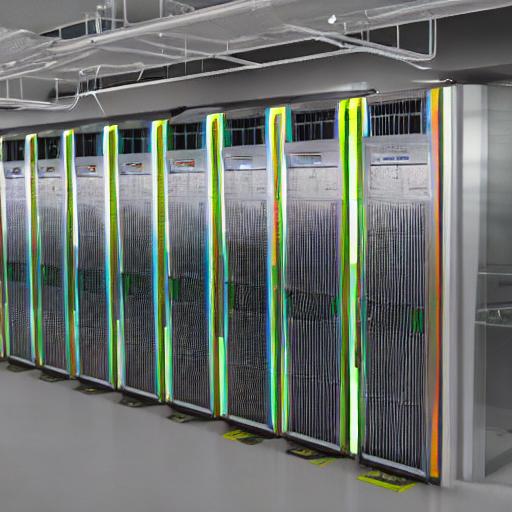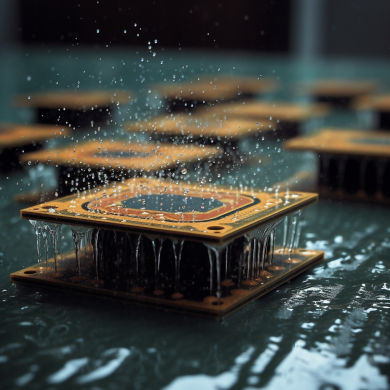Comparative Analysis of TPUs and CPUs: Specialized Efficiency vs. Versatile Performance

When comparing Tensor Processing Units (TPUs) and Central Processing Units (CPUs), it is essential to consider their distinct purposes, architectures, and performance characteristics. TPUs, developed by Google, are specialized hardware accelerators designed explicitly for accelerating machine learning workloads, particularly those involving large-scale neural networks and deep learning models. They are highly optimized for the matrix multiplications and tensor operations that are foundational to these tasks, providing significant speed advantages and improved energy efficiency for both training and inference phases of machine learning. This specialization allows TPUs to outperform CPUs in specific AI tasks, achieving higher throughput and lower latency for large-scale data processing.
In contrast, CPUs are general-purpose processors found in almost all computing devices, from personal computers and servers to embedded systems. Their architecture is designed to handle a wide variety of tasks, making them highly versatile. CPUs excel at tasks requiring complex computations, high precision, and the ability to execute a broad range of instructions, including operating system management, I/O operations, and running diverse software applications. While CPUs can also perform machine learning tasks, they are not as efficient as TPUs for these specific workloads due to their more generalized design.
The flexibility of CPUs makes them indispensable for everyday computing needs, whereas the specialized nature of TPUs limits their application primarily to machine learning and AI tasks. Additionally, TPUs are typically deployed in data centers and accessed via cloud services like Google Cloud’s AI Platform, whereas CPUs are ubiquitous and integral to virtually all personal and enterprise computing environments. In terms of energy efficiency, TPUs offer a better performance-per-watt ratio for machine learning tasks, making them more cost-effective for large-scale AI applications. However, CPUs are optimized for a wide array of applications, providing a balanced performance across various tasks.

In summary, while TPUs offer superior performance and efficiency for machine learning workloads, CPUs provide unmatched versatility and are essential for general-purpose computing. The choice between TPUs and CPUs ultimately depends on the specific requirements of the task, with TPUs being the preferred choice for specialized AI tasks and CPUs for a broader range of computational needs.

TPUs (Tensor Processing Units)
- Purpose: TPUs are specialized hardware accelerators designed by Google specifically for accelerating machine learning workloads, particularly for TensorFlow operations.
- Performance: TPUs are highly optimized for large-scale matrix operations and can handle complex neural network computations with high efficiency. They offer significant speed advantages for training and inferencing deep learning models.
- Energy Efficiency: TPUs are designed to be energy-efficient for ML tasks, often providing better performance per watt compared to GPUs and CPUs for these specific workloads.
- Usability: TPUs are typically used in data centers and cloud environments, and they are accessible through cloud services like Google Cloud’s AI Platform.
CPUs (Central Processing Units)
- Purpose: CPUs are general-purpose processors that are capable of handling a wide variety of tasks. They are the primary processing units in most computing devices, from personal computers to servers.
- Performance: CPUs excel at single-threaded performance and can handle complex tasks that require high precision and flexibility. They are also good at handling a wide range of applications, including those that require interaction with the operating system, I/O operations, and general-purpose computing tasks.
- Energy Efficiency: CPUs are generally less energy-efficient for specific machine learning workloads compared to TPUs and GPUs, but they are optimized for a broad range of applications.
- Usability: CPUs are ubiquitous and are used in almost all computing devices. They are versatile and can run a variety of software applications.

Comparison Summary
- Machine Learning Tasks: TPUs are typically better for large-scale machine learning tasks due to their specialized architecture and optimization for matrix operations. They provide faster training and inference times for deep learning models.
- General-Purpose Computing: CPUs are better for general-purpose computing tasks that require flexibility, high precision, and the ability to handle a variety of software applications.
- Flexibility: CPUs offer more flexibility and are capable of running a wide range of applications, whereas TPUs are specialized for TensorFlow and deep learning workloads.
- Energy Efficiency: For machine learning tasks, TPUs are more energy-efficient compared to CPUs. However, for general-purpose tasks, CPUs are typically more efficient.
In summary, TPUs are superior for specific machine learning tasks due to their high performance and energy efficiency for these workloads, while CPUs are more versatile and better suited for general-purpose computing tasks. The choice between TPUs and CPUs depends on the specific requirements of the task at hand.
